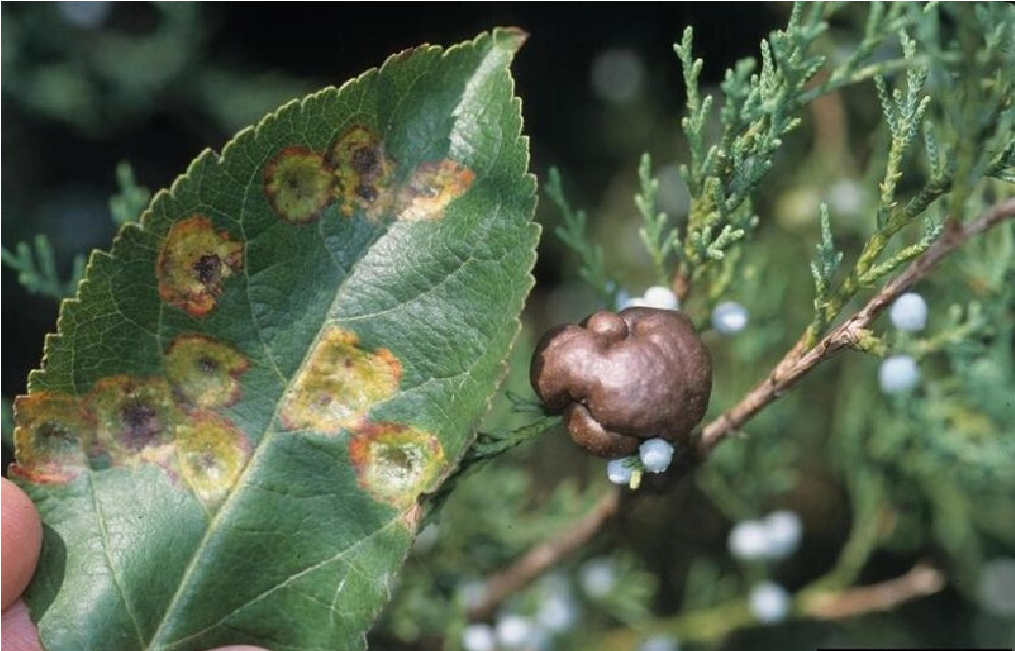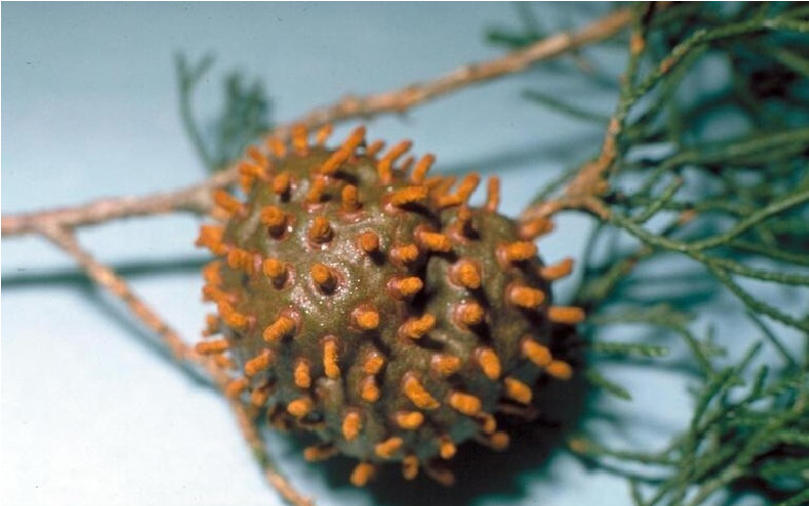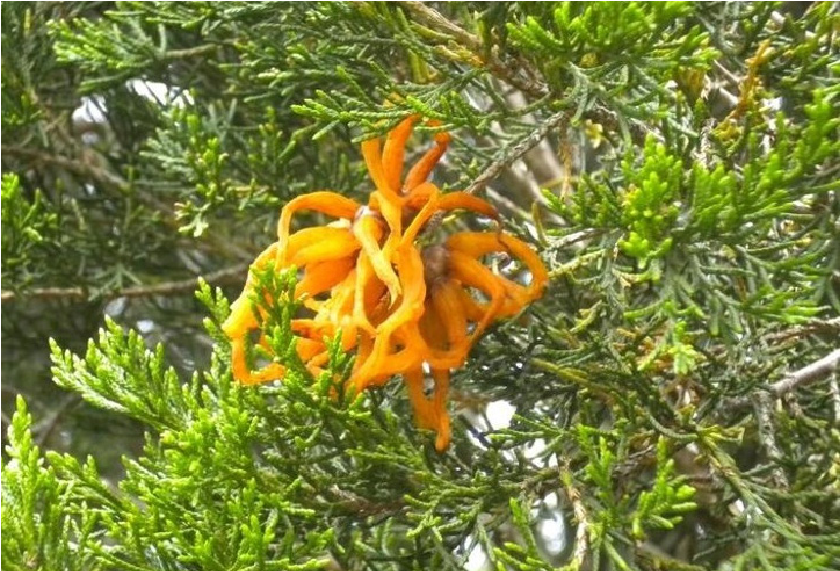Cedar Apple Rust (Scientific Name of Pathogen: Gymnosporangium juniperi-virginianae - Fungus)
Hosts:

Figure 1: Cedar-apple rust gall on juniper and bright colored leaf spots on apple leaf. Photo by Gerald Holmes, California Polytechnic State University at San Luis Obispo, Bugwood.org.
Eastern red cedar, Rocky Mountain juniper, common and prostrate junipers.
Alternate Hosts: Apple, crabapple, occasionally on hawthorn
Damage/symptoms:
Bulbous, brown to reddish-brown galls of various sizes form on evergreen twigs/branches that were infected the previous year. After rainy periods in spring, bright orange to yellow gelatinous tendrils form on the galls. Galls can cause dieback of small twigs.
Apple/crabapple: Bright orange/yellow spots appear on leaf surfaces in late spring to early summer. The spots enlarge and form finger-
like structures on the underside of leaves. Affected leaves may drop during the summer. On fruits, orange/yellow spots can also form. Infection reduces fruit quality and may lead to

Figure 2: Orange spores developing on galls in spring. Photo by John Hartman, University of Kentucky, Bugwood.org
premature fruit drop.
Disease cycle:
In spring, orange-yellow spores are produced on galls of infected juniper plants, and dispersed by wind, infecting apple and/or crabapple trees in late spring to early summer. Leaf spots on alternate hosts produce a new set of spores on finger-like structures formed on the undersides of leaves in midsummer. This new set of spores is dispersed by wind and carried to juniper hosts.
Management:

Figure 3: Fully developed gelatinous galls on juniper host. Photo by Elizabeth Bush, Virginia Polytechnic Institute and State University, Bugwood.org
Ideally, the two hosts are physically separated. Plant resistant varieties whenever possible. Remove galls on junipers in early spring to reduce the inoculum. Disinfect pruning tools between cuts with 70% ethyl alcohol or a standard household disinfectant spray. Consider applying a protectant fungicide that is labeled for rust. Apply to emerging leaves of ornamental alternate hosts. Multiple applications might be necessary depending on the selected product.
By Eva Grimme, MSU Associate Extension Specialist III. February 2024. For more information, contact diagnostics@montana.edu.
This March 2024 fact sheet is also available as a printable PDF (471KB).
Disclaimer: These recommendations are provided only as a guide. It is always the pesticide applicator’s responsibility, by law, to read and follow all current label directions for the specific pesticide being used. The authors and Montana State University assume no liability resulting from the use of these recommendations. The Montana State University Extension Service is an ADA/EO/AA/Veteran’s Preference Employer and Provider of Educational Outreach.
